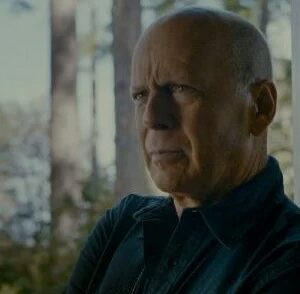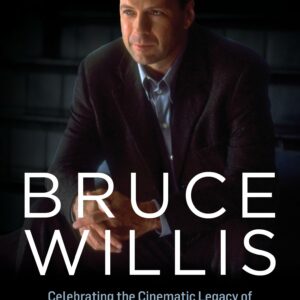In the world of cinema, there are those rare moments when a film transcends its genre, reshaping the landscape and reconfiguring the careers of those involved. Cillian Murphy’s breakthrough role in 28 Days Later is one such moment. Directed by the visionary Danny Boyle, the film was not just a revitalization of the zombie genre, but it also heralded the arrival of one of modern cinema’s most captivating actors—Murphy himself. In this article, we’ll trace the trajectory of Murphy’s early career, dissect the significance of 28 Days Later, and explore how this film cemented his place in the cinematic world.
Cillian Murphy: From Early Days to the Edge of Stardom
Born in Douglas, County Cork, Ireland, in 1976, Cillian Murphy’s initial artistic inclination was not towards acting but music. A talented musician, Murphy was on the cusp of signing a record deal with his band, The Sons of Mr. Green Genes. However, fate had other plans. A burgeoning interest in theatre led Murphy to explore acting in the late 1990s, appearing in small but memorable roles in Irish independent films like Disco Pigs (2001). His performances in these smaller productions, though largely unseen by global audiences, hinted at the talent that would soon propel him into the mainstream.
But it was in 2002, in a role that combined psychological intensity with raw physicality, that Murphy would find his first true brush with international fame. Enter Danny Boyle’s 28 Days Later.
28 Days Later: The Plot, Director, and Redefining a Genre
28 Days Later is not a typical zombie movie, at least not in the sense that audiences were accustomed to at the time. The film, written by Alex Garland and directed by Boyle, takes place in a dystopian, post-apocalyptic Britain where a highly contagious virus—aptly named Rage—has turned much of the population into terrifyingly fast, savage beings. The horror here is visceral, immediate, and unnervingly grounded. Gone were the slow, lumbering zombies of George A. Romero’s films, replaced by frenzied, bloodthirsty monsters that could sprint as fast as the fear they induced.
Danny Boyle, fresh off the success of Trainspotting (1996), brought his kinetic directorial style to the project. His unique vision, combined with Garland’s tight script, transformed 28 Days Later into something much more than a traditional horror film. It became a meditation on humanity, survival, and the thin line separating civilization from chaos. The film’s gritty digital cinematography (shot on a Canon XL1) gave it a documentary-like realism that intensified the terror, making the violence feel all too real.
At the heart of this chaos is Murphy’s character, Jim, a bicycle courier who wakes from a coma 28 days after the virus outbreak. Confused, alone, and utterly vulnerable, Jim is the audience’s anchor in this nightmare world—a character through whose eyes we experience the devastation. And this is where Murphy’s performance truly shines.
Murphy’s Breakthrough Role: Jim and the Power of Performance
Jim is not a natural hero. When we first meet him, he is bewildered, afraid, and disoriented. He walks through the abandoned streets of London, searching for signs of life, his eyes wide with terror and curiosity. This initial vulnerability is what makes Jim such a compelling character. He is not an action hero, but an everyman, thrust into extraordinary circumstances. Murphy’s ability to convey this sense of fragility while also hinting at the latent strength within Jim is a testament to his skill as an actor.
As the film progresses, we witness Jim’s transformation. He goes from a passive observer of the horrors around him to a man willing to do whatever it takes to survive. By the film’s climax, Jim has become a force of nature—his violent outburst in the final act a cathartic release of all the fear, anger, and grief that has been building inside him. Murphy’s portrayal of this evolution is nothing short of mesmerizing.
What sets Murphy’s performance apart is the quiet intensity he brings to the role. Even in the film’s quieter moments—when Jim is simply observing the world around him or interacting with his fellow survivors—there is a depth to Murphy’s portrayal that draws the viewer in. His eyes, often wide with a mixture of fear and wonder, tell a story of their own. It is a performance that grounds the film’s more fantastical elements in a very real emotional core, making Jim’s journey feel all the more poignant and relatable.
Critical and Audience Reception: Murphy’s Star Ascends
When 28 Days Later was released in 2002, it was met with widespread critical acclaim. Audiences were equally captivated, drawn in by the film’s unique take on the zombie genre and its unrelenting intensity. The film went on to become a commercial success, grossing over $82 million worldwide on a modest budget of $8 million.
Critics were particularly effusive in their praise for Murphy’s performance. His portrayal of Jim was hailed as both nuanced and powerful, with many noting the way he humanized a character in a genre often known for its one-dimensional protagonists. It was clear that Murphy had brought something new to the table—a combination of vulnerability and strength that made Jim a character worth rooting for.
While the film’s fast-moving “infected” and its gritty realism garnered much of the attention, it was Murphy’s performance that lingered in the minds of many viewers. He wasn’t playing a typical action hero or a hardened survivor. Jim was someone you could imagine knowing, someone who reacted to the horrific circumstances around him the way any of us might—with confusion, fear, and, eventually, resolve. This relatability made Jim’s journey all the more impactful and solidified Murphy’s status as a rising star in Hollywood.
Impact on Murphy’s Career: Doors Opened, Opportunities Arose
The success of 28 Days Later did more than just reinvigorate the zombie genre—it put Cillian Murphy on the map. Suddenly, Hollywood was taking notice of the Irish actor with the piercing blue eyes and the ability to convey deep emotion with just a glance. Offers began to pour in, and Murphy soon found himself working with some of the most respected directors in the industry.
In the years following 28 Days Later, Murphy’s career trajectory continued to ascend. He starred in Cold Mountain (2003) alongside Jude Law and Nicole Kidman and Red Eye (2005), a tense thriller directed by Wes Craven. But perhaps his most significant post-28 Days Later role came in 2005, when he was cast as Dr. Jonathan Crane, aka Scarecrow, in Christopher Nolan’s Batman Begins. The film’s success marked the beginning of a long and fruitful collaboration between Murphy and Nolan, with Murphy appearing in several of the director’s subsequent films, including Inception (2010) and Dunkirk (2017).
In addition to his work in film, Murphy has also found success on television, most notably as the lead in the critically acclaimed series Peaky Blinders (2013-present), where he plays the ruthless yet charismatic gang leader Tommy Shelby. Once again, Murphy’s ability to imbue his characters with both vulnerability and menace has made his portrayal of Shelby one of the most iconic performances in recent television history.
Legacy of the Film and Murphy’s Role: Lasting Impact on Pop Culture and His Career
Looking back, it’s clear that 28 Days Later was more than just a career-defining moment for Cillian Murphy—it was a cultural touchstone. The film’s influence on the zombie genre is undeniable, with many of its innovations—such as the fast-moving infected and the emphasis on survival in a post-apocalyptic world—becoming staples of the genre in subsequent films and television shows like The Walking Dead.
But perhaps even more significant is the way the film set the stage for Murphy’s career. In many ways, 28 Days Later established the blueprint for the kind of roles Murphy would become known for—complex, emotionally charged characters who operate in morally ambiguous worlds. Whether he’s playing a reluctant hero like Jim, a conflicted villain like Scarecrow, or a calculating anti-hero like Tommy Shelby, Murphy’s performances are always layered with nuance and depth.
As of today, Cillian Murphy stands as one of the most respected actors of his generation, and much of that can be traced back to his performance in 28 Days Later. It was the role that made the world take notice, and it’s a testament to Murphy’s talent that, two decades later, he continues to captivate audiences with his performances.
Conclusion: A Star is Born
In 28 Days Later, Cillian Murphy didn’t just play a man struggling to survive in a world overrun by monsters—he announced his arrival as one of the most compelling actors of his time. His portrayal of Jim was a masterclass in understated intensity, and it set the stage for a career filled with memorable roles in both film and television. As we look back on the legacy of 28 Days Later, it’s clear that Murphy’s performance was the beating heart of the film, and its impact on his career—and on pop culture—cannot be overstated.





